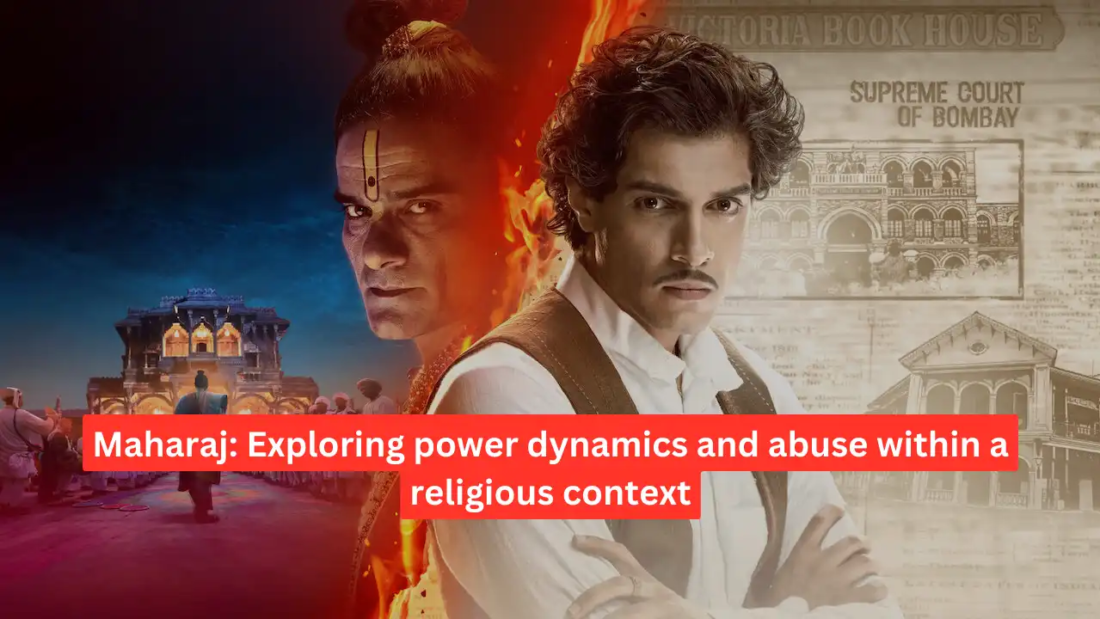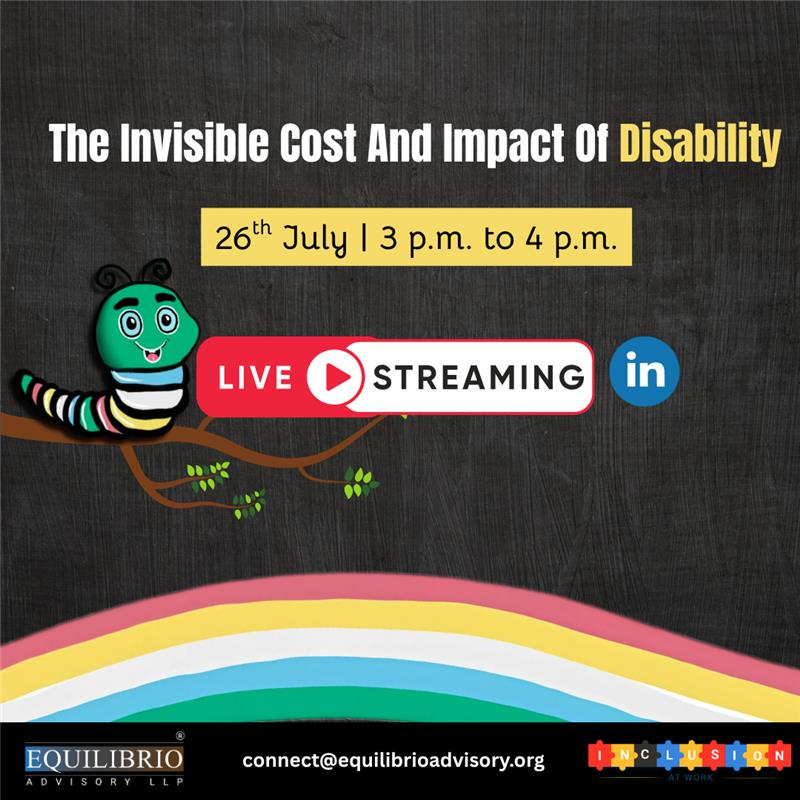INTRODUCTION┬Ā
Many turn to religion as an institution that offers support, community and an opportunity for spiritual growth. However, often, religious traditions are socio-historically rooted in the tenets of patriarchy which can lead to gendered oppression and exploitation. It can also lead to the practice of promoting homogeneity and uniformity as opposed to embracing diversity and inclusion. As our history books stand testament, trying to homogenize diverse masses can lead to systemic violence especially when intersectional identities are not considered within social and legal frameworks. Today we will be reviewing the need for sociolegal provisions for safety of all individuals within religious settings, from the perspective of the film ŌĆ£MaharajŌĆØ, based on the Maharaj Libel Case.
REVISITING THE MAHARAJ LIBEL CASE┬Ā
When it comes to the practice of creating a safe environment within religious settings, we can look back to the famous Maharaj Libel Case that set a benchmark legal precedent. In 1800s India, Journalist Karsandas Mulji witnessed the woman he loved being lured in by Maharaj, a charismatic leader. Under the pretense of religious devotion, Maharaj preyed on women emotionally and sexually. Outraged, Karsandas attempted to reveal Maharaj’s misdeeds to the public leveraging his voice as a journalist through his writings. Despite receiving a lot of sociopolitical backlash within his own community for questioning a revered figure, he continued to push for accountability and ensure the safety of all practicing individuals. But his fight was an uphill battle because of the ingrained patriarchal systems and societal norms that did not accord the rights of sexual autonomy to women and glorified abusive practices. Karsandas MuljiŌĆÖs actions led to the Maharaj Libel Case, which caused quite a stir within his community. This string of historical events inspired the recent Netflix release, ŌĆ£MaharajŌĆØ.
The Bombay High Court in British India held the trial of the Maharaj Libel Case in 1862. Jadunathjee Brajratanjee Maharaj lodged a lawsuit against Karsandas Mulji, who was also a reformist leader in his own right, and Nanabhai Rustomji Ranina. The editorial piece they wrote accusing the Pushtimarg Sect and Vallabhacharya led to the filing of the lawsuit. This case brought to light, the emerging conflicts between controversial but established social traditions like ŌĆ£charan sevaŌĆØŌĆöa ritual that normalized sexual favours to religious leaders by women of the community ŌĆöand newly popular reformist ideologies in colonial India, attracting a lot of public attention and receiving recognition for Mulji’s efforts.
RELIGIOUS FREEDOM AND CRITICAL THINKING┬Ā
A constitutional right, religious freedom allows people to follow their beliefs without intervention from the State. Although it gives people the freedom to practice their beliefs, those in positions of religious authority (which also accords them social influence) may take undue advantage of it. This ominous side is well illustrated by the Maharaj Libel Case.
The leader in question, Jadunathjee Maharaj, perhaps under the pretext of divine authority legitimized inappropriate actions such as abusive practices like “charan seva”. This perceived act of devotion was normalized by the community as well. In the nineteenth century, education and social independence was unheard of amongst women, which lead to a lack of informed consent when it came to accepting long-held religious practices. Thus, it became one of the tools for manipulating followers, especially women.
Historically, women have been stripped off from the immunity of quick justice and supportive recourse when their rights were violated. Moreover, women were indoctrinated to believe that disobedience can cause grave dishonor.
In the nineteenth century, Indian society was going through a wave of social reformation, where old religious practices were being reviewed through the Western prism of individual liberty and equality of all human beings. Religious practices like the Sati (where a widow was expected to self-immolate on her husbandŌĆÖs funeral pyre) were being abolished, while practices like allowing widows to remarry were being encouraged. Marginalized identities like women and people from oppressed caste locations were finding a space to educate themselves and find their voice.
Since religious authority is a space that has been historically designed and occupied by men, it overlaps with a lot of patriarchal tenets that seek to control and repress the bodies of women and other marginalized identities.
EXPLORING POWER DYNAMICS AND ABUSE WITHIN A RELIGIOUS CONTEXT┬Ā┬Ā
In the above context, a complicated topic that comes up in various circumstances globally is the tension between religious authority and legal responsibility. It centers on the conflict between defending people’s, especially womenŌĆÖs, freedom to practice their religion and making sure that religious organizations and leaders are held legally accountable for any wrongdoing or injury they may cause. This contradiction is most evident in situations when there have been claims of financial malfeasance, abuse, discrimination, or other negative actions inside religious organizations.
The inherent power dynamics between a religious leader and their follower must be understood within the socio-historical context of systems like patriarchy and capitalism. Often the socio-cultural clout that comes with religious authority can shield such a figure from being held accountable for their actions. Given the indoctrination and societal pressure, a follower often has little choice when it comes to avoiding abusive practices within religious cults. On the other hand, a follower who comes out with an account of abuse can be ostracized from their community for challenging a revered figure. Additionally, there can be physical and psychological scars that a follower has to endure after they have been exploited at the hands of a religious leader they trusted.
Sexual or physical abuse can lead to symptoms of PTSD (Post Traumatic Stress Disorder). It can entail anxiety, intrusive flashbacks, hypervigilance, mood swings, changes in appetite and sleep among other things. Suicidal ideation, and feelings of guilt and shame can also be the direct consequences of sexual exploitation. It can be equally hard for such an individual to re-integrate into the social fabric, as we see in the film as well, when the character of Kishori (Shalini Pandey) dies by suicide after being sexually assaulted.
The Maharaj case is not an isolated incident. Our news cycle is rife with examples of religious leaders like Asaram and Ram Rahim, abusing their power under the pretext of religious practices. They pressure innocent, young followers to extort monetary gains, restrict their freedom of movement or choice, or commit physical or sexual violence on unsuspecting devotees. Religious and cultural texts can often become social capital and be interpreted to suit the conveniences of the privileged ruling class. Therefore, traditions should be understood from the prism of socio-cultural understanding of ancestral heritages, and adapted to present day needs keeping the sociolegal rights of all individuals in their purview
THE WAY FORWARD: SOCIO-LEGAL ACTIONS┬Ā
Laws should also be put in place to stop religious leaders from abusing their position of power for their benefit. India does not have a specific law explicitly targeting religious cult leaders. However, various legal provisions can address issues arising from harmful practices associated with such groups. These include laws against unlawful assembly, criminal conspiracy, and other criminal offenses. Article 25 of the Indian Constitution guarantees the freedom of conscience and the right to freely profess, practice, and propagate religion, subject to public order, morality, and health.
However, Article 25(1): “Subject to public order, morality and health and to the other provisions of this Part, all persons are equally entitled to freedom of conscience and the right freely to profess, practice and propagate religion.” In case of sexual abuse and/or rape, individuals have recourse to legal provisions under Bharatiya Nyaya Sanhita and Protection of Children from Sexual Harassment Act (POCSO) for children.
Moving forward, it is necessary to further the discourse and ensure that people are encouraged to critically examine long-held traditions while they revere religious practices. Women and other marginalized entities need to be empowered to be able to critically think about and evaluate their positions within religious hierarchies. Individuals must strive to protect their rights while challenging unidimensional interpretations of religious traditions or texts. Thus, fostering a respectful and empowering environment for all religious beliefs and their followers.┬Ā
– Usri Basistha and Anoushka Mohan, reviewed by Deeksha Rai and Rosanna Rodrigues┬Ā
 Cart is empty
Cart is empty 


